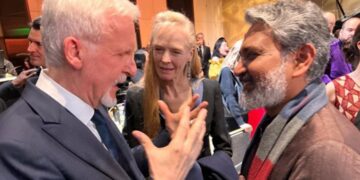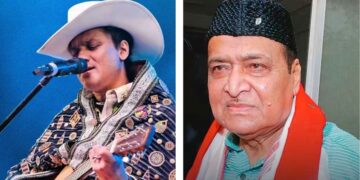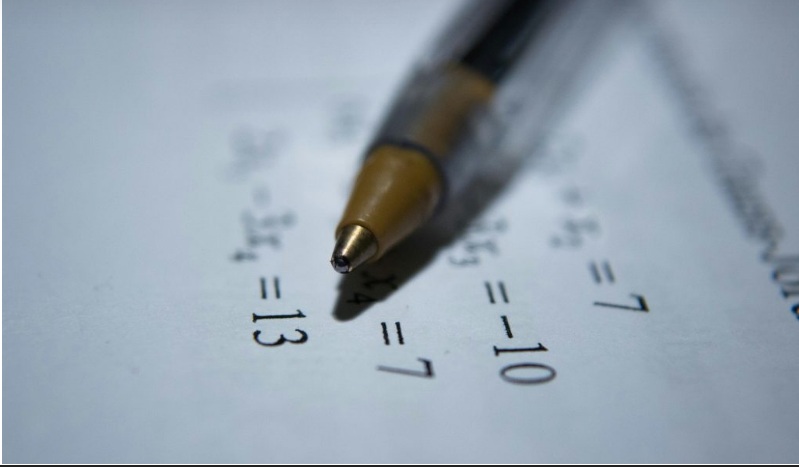By Ziya Uddin, Luckshay Batra, Satpal Singh, Aradhana Narang, Palak Goel & Himanshu Upreti
The University Grants Commission’s draft mathematics curriculum, 2025, unveiled in August, has sparked a debate around its skewed emphasis on ancient knowledge systems over core subjects.
Designed for undergraduate and postgraduate students, the revised curriculum has been designed to align with the government’s National Education Policy (NEP), 2020. According to the policy document, the proposed curriculum reflects a “forward-thinking approach” and offers students a “robust foundation in mathematical concepts and skills”.
Its authors emphasise “value-based education”, interdisciplinary relevance and its “integration with the Indian Knowledge System”.
However, a vast section of academics and experts have raised concerns about the draft’s overemphasis on ancient knowledge systems, particularly at the expense of core subjects, that could compromise students’ preparedness in the job market.
Push for Indian Knowledge Systems
Those in favour of the curriculum argue that nothing in the revised framework prevents attention to core subjects, and that contemporary mathematics paired with historical and civilisational literacy will train students in comparative reasoning.
The draft includes core subjects such as calculus, algebra, analysis, probability and differential equations. It introduces electives in advanced topics such as computational and data science, and proposes a research project for students of Bachelors in Science (Honours) in their final year.
But there is a strong push for Indian Knowledge Systems, as evident from the addition of courses on Kala Ganana (traditional Indian time keeping), Bharatiya Bijganit (Indian algebra), Shulva Sutra (aphorisms of measurement with a rope) geometry, Philosophy of Indian Mathematics, ancient Sanskrit texts and cosmic time cycles.
Such additions may lead one to believe that the curriculum is rich in culture. But these courses are merely a repetition of school-level content, besides being better suited to the disciplines of astronomy and religious studies.
For instance, the course on traditional Indian timekeeping might be engaging as cultural history but is misaligned with modern mathematical skills or applications.
The course on Indian Algebra incorporates the contributions of Indian scholars such as Brahmagupta and Bhaskara. While historically important, reverting to sutra-based (formula-based) methods is regressive, especially when students already learn advanced algebraic structures at the undergraduate level.
Similarly, geometry from the Shulba Sutras may have been fascinating for its time (800 BCE-200 BCE) but now, it largely overlaps with mathematics taught in high schools. Expecting undergraduates who handle linear algebra to study one-variable sutra-based equations or solutions of single variable equations based on formula-based methods is taking several steps back.
The draft also focuses on ancient texts such as Surya Siddhanta and Aryabhatiyam, which are primarily works of astronomy and cosmology. Most of the texts are available only in Sanskrit language, in the form of shlokas (verses), further limiting its accessibility to students and faculty.
The courses on cosmic time cycles and Panchanga (literal meaning: five attributes, or five limbs; a guide to the auspicious and inauspicious timings of the day) also collectively belong more to the disciplines of cultural astronomy and religious studies than mathematics.
Such inclusions risk weakening the academic credibility of the core mathematics curriculum. For students aiming at Joint Admission Tests for Masters (JAM) — IIT JAM is the gateway for admission to Masters in Science and related programmes at premium Indian institutes such as the IITs and Indian Institute of Science, Bengaluru — the National Eligibility Test for teachers or international graduate programmes, such courses offer little value.
Cultural heritage versus core competency
Mathematics has always been the core of India’s intellectual heritage. Indian mathematicians’ contributions to the field have had a lasting impact on the world, from the decimal place-value system to the groundbreaking discoveries of Brahmagupta and Srinivasa Ramanujan.
Research by one of the authors of this article shows how Indian mathematicians Brahmagupta and Bhaskara developed early ideas of zero and division by zero. Later, these concepts were connected with those of European thinkers such as Swiss polymath Leonhard Euler and Scottish mathematician John Craig. The research underscores the depth of tradition but by locating it within the ambit of the history of mathematics, where such contributions are best understood in dialogue with global developments.
Thus, it’s no one’s case that ancient Indian mathematical concepts do not deserve scholarly attention and cultural recognition.
However, the issue is when they begin to substitute core competencies, that too in the age of artificial intelligence (AI) and machine learning (ML). Diverting focus from core areas such as linear algebra, probability, differential equations, optimization, game theory, discrete mathematics, information theory and computer programming—that form the backbone of modern mathematics, technology, data analysis, economics and AI—risks leaving students unprepared for global research and industry.
An overemphasis on heritage-based courses risks diluting rigor, reducing employability and harming India’s competitiveness in cutting-edge fields.
Offer electives in other disciplines
There are several ways to highlight India’s mathematical contributions and train students to appreciate their cultural heritage.
One is to offer an elective on the history of Indian mathematics or ancient mathematics. Such subjects could also be offered as electives in Sanskrit colleges or departments where students study priesthood, astrology or traditional studies. Such electives can also be offered in the disciplines of history or cultural studies.
This would ensure that mathematics remains universal and rigorous; the core curriculum stays centred on proof, abstraction, analysis, probability, algebra and computational methods—the global language of mathematics.
Emphasise on research, innovation
Heritage can enrich but not replace rigor.
In today’s increasingly competitive global economy, India cannot afford to dilute its graduates’ scientific and technological capabilities. The difficulty is not whether or not to incorporate ancient mathematics but rather, how to do so without sacrificing modern mathematics’ rigour, abstraction and applicability.
The key is to incorporate ancient Indian mathematics in a structured but limited way that honours our heritage and creates awareness of the depth of India’s intellectual traditions without replacing the modern mathematical foundation.
Students should be able to appreciate the history of Śulba Sūtras and work confidently with the mathematics that forms the foundation of today’s scientific and technological world; write AI algorithms and recognise Ramanujan’s brilliance while resolving optimisation issues for contemporary businesses.
Developments in AI, ML, data science, cryptography and financial engineering are driving the global economy. In that context, Indian graduates need a strong foundation in the areas of pure mathematics (algebra, analysis, topology, proof-based reasoning), applied mathematics (discrete mathematics, optimisation, differential equations, probability) and computational mathematics (numerical methods, coding algorithms, modelling techniques).
Mathematics education in India must stay strongly focused on areas that directly contribute to employability, research capacity and innovation. This alignment with market requirements is critical not only for individual career success but also for boosting India’s status as a technological and scientific powerhouse.
The authors are Professors of Mathematics at the School of Engineering & Technology, BML Munjal University, Haryana.
Originally published under Creative Commons by 360info™.















